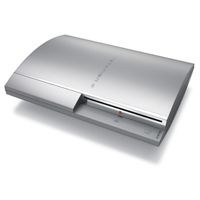In September 2006, news agencies reported that Sony's forthcoming PlayStation wasn't just for fun and games. Sony and Stanford University's Folding@home project had created a distributed computing application for the game console. With Folding@home, PlayStation 3 owners will be able to donate their consoles' processing power to scientific research.
Computer users may already be familiar with distributed computing. Distributed computing applications break huge processing tasks into smaller chunks. Lots of home computers then process the data simultaneously. One such application, SETI@home, became a popular screensaver after its debut in 1999. SETI@home allows idle computers to process data from radio telescopes.
Advertisement
Folding@home is similar to SETI@ home, and it allows scientists to study protein folding, or protein assembly. Incorrectly-folded proteins can cause serious illnesses, so scientists hope to simulate exactly how the process takes place. One computer's processing power isn't enough to recreate the folding process, but a distributed computing system can eventually recreate a fold from beginning to end. These simulations may help doctors discover how to treat or prevent diseases like cancer, Parkinson's disease and Alzheimer's disease.
In addition to running on home computers, Folding@home can run on the PlayStation 3. Older consoles wouldn't be of much use for this kind of number-crunching: Many have comparatively little processing power and no network connection. The PlayStation 3, though, is designed for fast-paced, realistic games that people can play online. The features that make it good for these games will also make it good for processing Folding@home data:
- Its Cell Broadband Engine central processing unit (CPU) has 234 million transistors and can make lots of complex calculations very quickly.
- Its hard drive, a 20 or 60 GB serial ATA drive, can hold large amounts of project data as it calculates.
- Its RSX graphics processing unit (GPU) lets it display the folding process onscreen in real time.
- Its built-in network capabilities allow it to receive instructions from a Stanford server and return completed work.
If 10,000 PlayStation 3 users download and use Folding@home, the system will be able to calculate on the petaflop scale. In other words, it will be able to make 1,000 trillion calculations per second.
After the PlayStation 3 hits the market, people will be able to download the Folding@home application for free. Once installed, it will:
- Contact the Folding@home server to retrieve an assignment, known as a work unit.
- Perform the necessary calculations while the console is idle.
- Connect to a Stanford University server and upload results when the work is finished.
Folding@home and other distributed computing applications work only when a computer is on and idle. People who want to use their consoles to run Folding@home will need to leave them on when not in use.
Check out the links on the next page for lots more information about the PlayStation 3, distributed computing and related topics.
Advertisement


